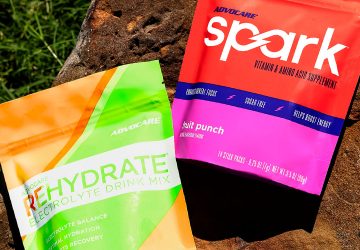
Usually when we think of spring cleaning it involves a dwelling space, cleaning and a little elbow grease. While it is certainly important to have a clean dwelling space, let’s think a little less conventionally and talk about some ways to help you get started on spring cleaning your body – and your nutrition habits!
Step 1: Schedule a routine physical exam/check-up.
As adults, many of us may feel that a yearly physical or check-up is not needed, but regular health exams and tests can help find problems before they start. Physical exams can help detect illnesses and diseases which may result in better outcomes down the road. Here are a few benefits of getting a check-up:
- Provides update of current health status
- Educates you on healthy lifestyle
- Remain current on vaccinations
- Provides health statistics such as weight, height, blood pressure, etc.
- May help detect the early onset of disease or illness
Step 2: Get moving outdoors.
You may have avoided workouts at the gym and blamed it on the cold weather, but as the seasons change, it’s time to renew your commitment to your health! As the spring season gifts us with warmer temperatures and a little more sunshine, find outdoor activities that you enjoy doing to help keep you active and fit.
According to the Centers for Disease Control and Prevention, 80 percent of Americans do not get the recommended amount of exercise each week. The recommendation for the average adult is 2.5 hours of moderate-intensity aerobic activity and to engage in muscle-strengthening activities like lifting weights or doing push-ups at least twice per week. With those recommendations in mind, here are a few fun outdoor activities to consider:
- Hiking or camping with family and friends
- Play tag, basketball or flag football with friends
- Go kayaking or canoeing
- Go running or take a brisk walk
- Take a bike ride down a new trail
Step 3: Eat fruits and vegetables in season.
According to the Centers for Disease Control and Prevention only 1 in 10 adults consume an adequate amount of fruits and vegetables. When you eat fruits and vegetables in season, they usually taste better and you get more of the nutrients you need. Additionally, most fruits and vegetables are available at a lower price point during their peak season.
Fruits and vegetables have phytochemicals, specific nutrients that the body needs that are only available in plants. Phytochemicals help support healthy body functions. There are great websites like seasonalfoodguide.org and fruitsandveggiesmorematters.org that give in depth descriptions of each fruit and vegetable, the months they are in season, and how to select them.
- Broccoli has about 3 grams of fiber per serving which is great for digestive health. It also has beneficial antioxidants like lutein and zeaxanthin which are great for eye health.
- Cabbage is rich in essential vitamins like Vitamin B5, B6 and B1. Vitamins are considered essential when they are required for normal daily functions and must be obtained from outside sources because the body is unable to make them itself.
- Collard Greens contain about 4 grams of fiber per serving. Collard greens are an amazing source of Vitamin C, which is a powerful antioxidant.
- Spinach provides more potassium compared to bananas. It is also a good source of plant-based iron.
- Strawberries are rich in iron, Vitamin K and folic acid. They are also a prime source of antioxidants that help support cardiovascular health.
- Cherries are a ‘sweet’ source of fiber. They also have antioxidants like quercetin, anthocyannins and carotenoids. Cherries have gained popularity for being a heart healthy food choice.
- Melons are a low calorie option that offer a host of antioxidants like Vitamin A, Vitamin C and lycopene. Lycopene is another heart healthy antioxidant that helps ward off free radicals by neutralizing them in the cell.
Step 4: Drink more water.
Water helps to regulate our body temperature, it assists with flushing waste out of our body, forming saliva, lubricating joints and helping to transport carbohydrates and proteins through our blood stream. It is important to drink adequate amounts of water each day. For most individuals, this is equivalent to drinking around 8 to 10, 8-ounce glasses of water per day or four to five bottles of water.
What are you waiting for? Schedule your yearly physical exam, get moving outdoors again, put down the junk food and pick up some yummy fruit and vegetables! Your body will thank you and you may even notice a new ‘spring’ in your step. ‘Tis the season for spring cleaning your nutritional habits!
Looking for more strategies to help clean up your diet? Make sure to checkout the 24-Day JumpStart®, a guided program designed help you stay on track and stay confident in your success.
References
cdc.gov
health.gov
fda.gov

Lauren Horton, PhD.
Dr. Lauren Horton is passionate about moving patient care forward through research. As a Division Research Director, she is at the forefront of groundbreaking studies and innovation. Her dedication to advancing knowledge and solving complex problems has led to her pivotal role in shaping the future of patient care in the healthcare industry.
Dr. Horton leverages her deep insights and knack for communicating complex ideas in an accessible way to educate and engage a global audience. In her spare time, she is an avid advocate for health and wellness, dedicated to making a positive impact on the world. She believes that knowledge is a powerful tool for change and strives to empower others with the information and inspiration needed to effect meaningful transformation.
Dr. Horton loves to help improve the quality of life of those around her. She has helped men and women from all over the country discover how small steps each day can lead to huge strides towards living a healthier lifestyle.
Dr. Horton holds a BS in biology from Rust College, a MS in health economics and outcomes research from Xavier University and a PhD in biomedical science from Morehouse School of Medicine and completed her post-doctoral studies at the University of Pennsylvania.




